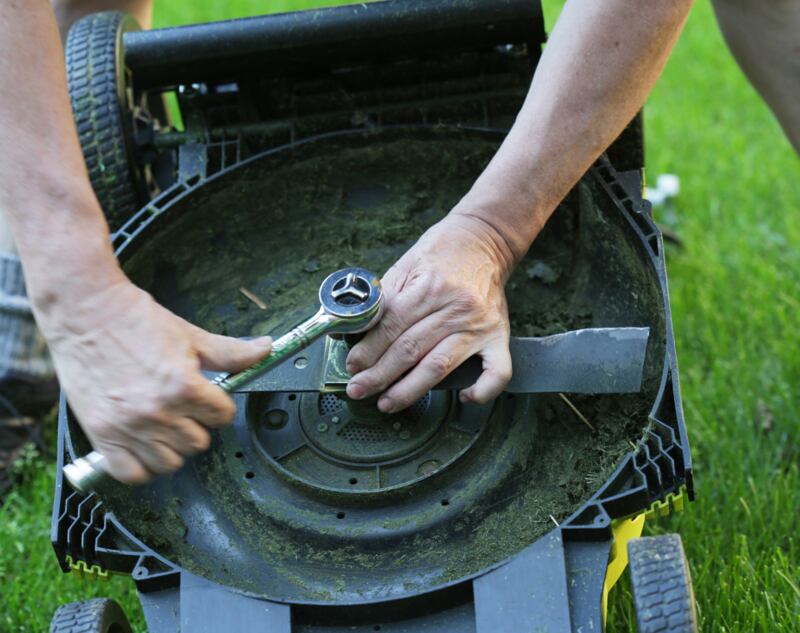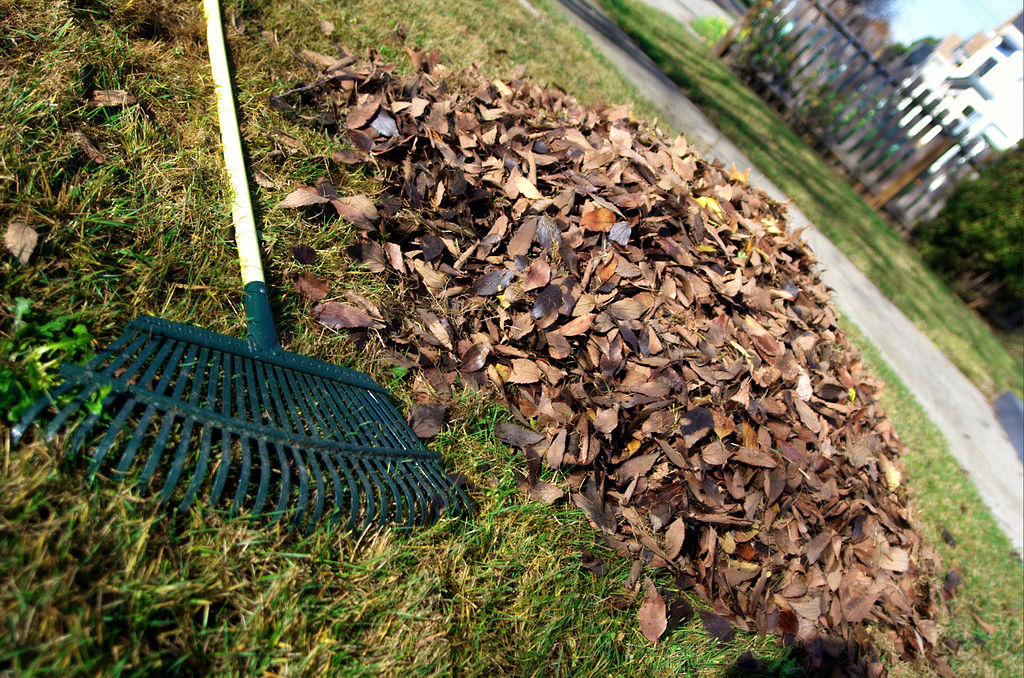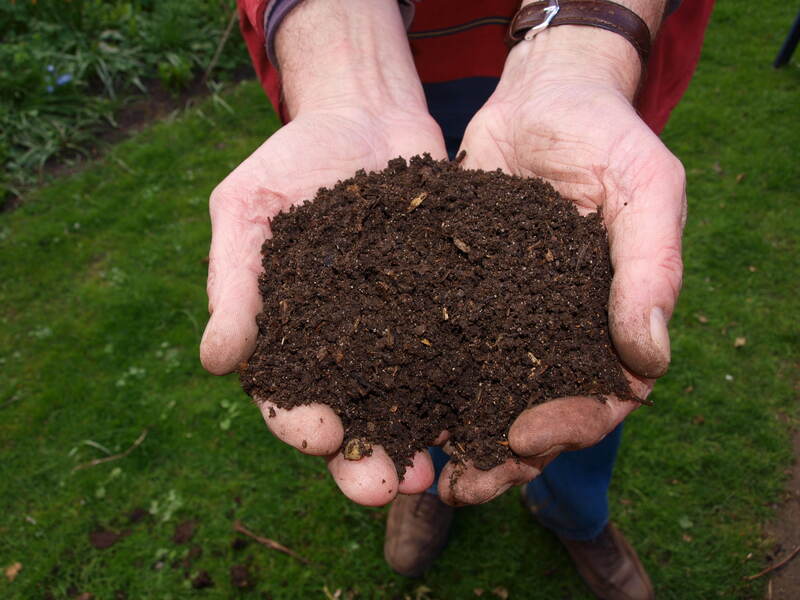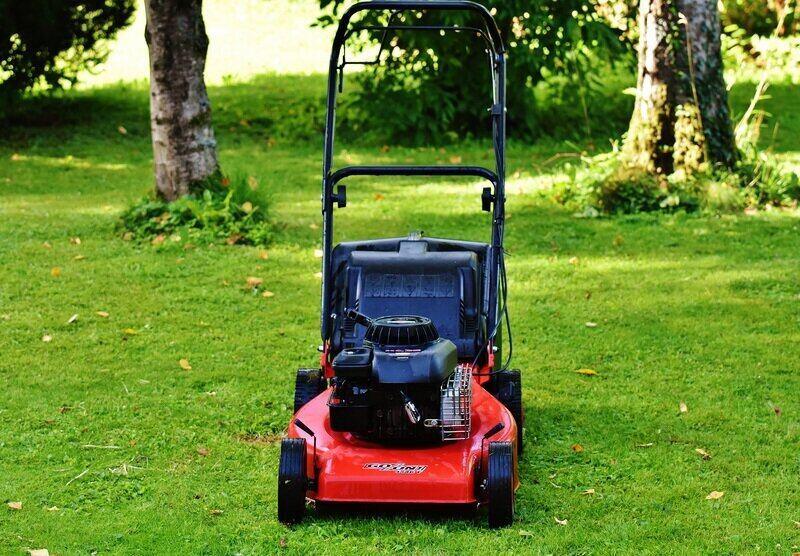6 Spring Lawn Care Tips For St. Louis
BY NICK CRAWFORD | MAY 15TH, 2023 | LAWN CARE, MISSOURI, ST. LOUISSpring in St. Louis can be gorgeous, especially once that signature Midwest frost begins to thaw. But don’t stand around too long admiring the scenery. There are some things you need to do to get your own yard in shape. If you follow these six tips to boost your lawn care routine in the spring, you’ll get the most out of your grass all year long.
In this article:
- Prepare Your Lawn Care Equipment
- Clean Up Your Lawn
- Balance Your Soil’s pH
- Apply Fertilizer
- Mow At The Right Time
- Properly Hydrate Your Lawn
1. Prepare Your Lawn Equipment

Photo Credit: KathrynHatashitaLee / Canva Pro / License
Caring for your lawn always requires a proper lawn mower. But your mower also needs care, especially after sitting in your garage for the winter. By performing this maintenance early in the Spring, you can avoid having to do it during the summer when the necessary yard work begins to pile up.
Here are the things you need to do to get this essential piece of lawn care equipment ready for use.
Sharpen and Clean the Blade
Sharpening your lawn mower’s blades is one oft-forgotten bit of maintenance. Trying to cut your grass with a dull blade is similar to shaving with a dull razor. You may end up tearing or ‘bruising’ the grass rather than shearing it neatly, which will hinder growth. And if your mower has a motor, it’ll have to work harder to get through your grass with a dull blade, which will wear it out faster.
Here is how to sharpen your lawn mower’s blades:
- Disconnect the spark plug and empty the gas tank. You could accidentally start the mower if you manually spin the lawnmower blade while the spark plug is connected, which would be a disaster.
- Flip the mower onto its side. Always tip it so the air filter and carburetor are facing up; otherwise, you could cause fuel and oil to leak into the carburetor and damage it.
- Mark the bottom of the lawn mower blade with a sharpie or a bit of duct tape so you know which side is which. Then, remove the blade using a wrench, ratchet, or screwdriver. You may need lubricant to loosen the bolt holding the blade in place.
- Clean the dirt, grass, and other accumulated debris from the blade to sharpen it effectively. In some cases, a dry rag may be enough. However, if you find that you need extra cleaning power, you can use a penetrating oil or cleanser. Try to avoid using anything too abrasive because it might weaken the blade when combined with the sharpening process.
- Put on protective eyewear and sturdy gloves.
- You’ll need both hands to sharpen the lawn mower blade, so secure it with a vise or bench clamp.
- A hand file is the best tool to use when sharpening your blade. Firmly run the file from the top of the cutting edge, following the bevel of the blade (usually an angle of 40 to 45 degrees).
- File the blade until it’s as sharp as a butter knife, then turn it over and repeat on the other side. You should be able to sharpen your lawn mower blade in less than 50 strokes.
As a quick note, you can use a hand grinder to sharpen a lawn mower blade. However, these blades are made with soft metal, and the friction from a grinder could heat the metal enough to damage it if you’re not careful.
If you have experience using a grinder, you can follow the same procedure as you would with a file. Should the blade begin to heat up, stop for a minute and let it cool down, or run some water over it.
Replace the Oil
Just like your car, your lawn mower needs oil to reduce friction within the engine’s parts. The heat from the engine eventually causes the oil to break down, which is made worse if that oil sits in your mower over the winter.
Your lawn mower’s engine oil should be changed every 50 hours of mowing or once every spring and summer, whichever comes first. Use a dipstick and only fill the oil to the designated mark.
Use high-quality engine oil in your lawn mower. 10W30 is the most common grade of motor oil, and it should be as suitable for most mowers as it is for cars and trucks.
However, check the owner’s manual to find out if your lawn mower has a four-stroke engine or a two-stroke engine. A two-stroke engine requires a mixture of gasoline and oil to function, usually ranging from 30:1 to 50:1 for the ratio of gas to oil. Two-stroke engines aren’t as common thanks to emissions regulations, but they are still around.
2. Clean Up Your Lawn

Photo Credit: David Goehring / Wikimedia Commons / CC BY 2.0
Dead leaves, twigs, and branches can accumulate on your lawn over the fall and winter, especially if there are trees on or near your property. When it snows, this detritus will form a tightly packed carpet over your lawn that prevents your grass from getting enough sun.
You should remove as many twigs and branches as you can in the spring so they don’t interfere with mowing or seeding. As for the fallen leaves, the traditional approach is to rake them, bag them, and have them taken to your local landfill. But, there is a better solution.
Fallen leaves make fantastic organic compost. Simply shred the leaves into smaller bits with your lawn mower for easier absorption as they decompose. You can even add grass clippings and spread the mix around your flower bed as mulch.
3. Test Your Soil

Photo Credit: Pxfuel
Many homeowners don’t realize that the soil in their lawn is just as alive as the plants that grow from it. It can change due to pollution, but the seasons also affect soil composition.
Missouri is home to over 500 types of soil, though menfro is the state soil. This clay-rich forest soil is well-drained and densely packed with decaying plant matter, making it very fertile. However, St. Louis’ location along the Central Missouri valley means that soil erosion sometimes makes for weak topsoil.
Though menfro soil is well known, you should still have your soil tested to determine whether you need to supplement it with more nitrogen, calcium, lime, or other minerals.
4. Apply Fertilizer
Typically, you would fertilize in the fall to provide your lawn with enough nutrients to get through the winter, especially if you have warm-season grass. However, you can help boost new growth with a light layer of fertilizer once during the spring.
If you choose to add fertilizer in the spring, use a slow-release nitrogen fertilizer. Faster fertilizers may encourage faster growth, but that isn’t always the best thing for young growth. You could even end up burning and damaging your grass.
To fertilize your lawn, apply a thin, even layer using a spreader. Hand-spreading the fertilizer may result in an inconsistent coating and missed spots. You also run the risk of adding too much fertilizer, and too much of a good thing is never good.
5. Mow At The Right Time

Photo Credit: PxHere
Growing your grass is like growing hair, and a timely trim of both can help maintain a desirable appearance. But don’t wait until the summer to start up the lawnmower. Keeping your lawn well-groomed early on can go a long way toward preventing weeds from popping up.
There are a few rules of thumb when it comes to mowing your lawn:
- Don’t remove more than one-third of the grass’ height in one mowing. Doing so may stress your lawn, causing thin patches and bare spots. The general rule is to wait until your grass is at least two inches high before mowing.
- Don’t mow wet grass. Diseases often propagate in your grass during frequent rain storms or heavy dew, and mowing moist grass simply throws it around and spreads the disease to other areas. Also, you could damage your lawn mower by forcing wet clumps of grass through the blade.
- Don’t leave clippings and clumps of grass sitting for too long. You can leave some grass clippings to naturally decompose and provide extra nutrients. However, too many clippings will simply choke your new growth.
6. Properly Hydrate Your Lawn
Plants need water to survive, and your lawn is no different. However, you shouldn’t irrigate your lawn until after the grass begins growing. The soil will still have leftover moisture from the temperature change and any snow or ice that may have thawed.
When watering your lawn, you should only water until the top six to eight inches of topsoil is wet. That’s the layer where most turfgrasses establish their roots.
Do not overwater your lawn. It may be tempting to simply dump a large amount of water on your soil and leave it for the week, but you could easily drown new grass. Too much water can also leave your lawn vulnerable to fungi and disease due to shallow root growth.
The best practice is to water your lawn three times a week in the spring. Check your local weather to avoid watering on a day when it’ll rain.
On the opposite end, don’t underwater your lawn, either. Lack of water will dry out the soil, which can already be a common problem with menfro soil.
You can test the moisture level of your soil with a screwdriver. Insert the head of the tool into your lawn. If you can push it in easily, the soil is moist. If you need to apply pressure or hear a ‘crackling’ sound as the dirt breaks, you need to add more water to your lawn.
Spring Lawn Care Leads To Healthy Summer Grass
Frontloading your yard work while your grass is still growing will pay off when you can spend more time simply enjoying the lawn when the St. Louis weather turns warm. But, the key word is work. You’ll have to put in the time and effort to cultivate a beautiful lawn.
Alternatively, you could put your lawn in the hands of a local lawn care professional, who will know exactly what needs to be done to clear your spring landscaping checklist.
Main Image Credit: Neighborhood, St. Louis / Unsplash